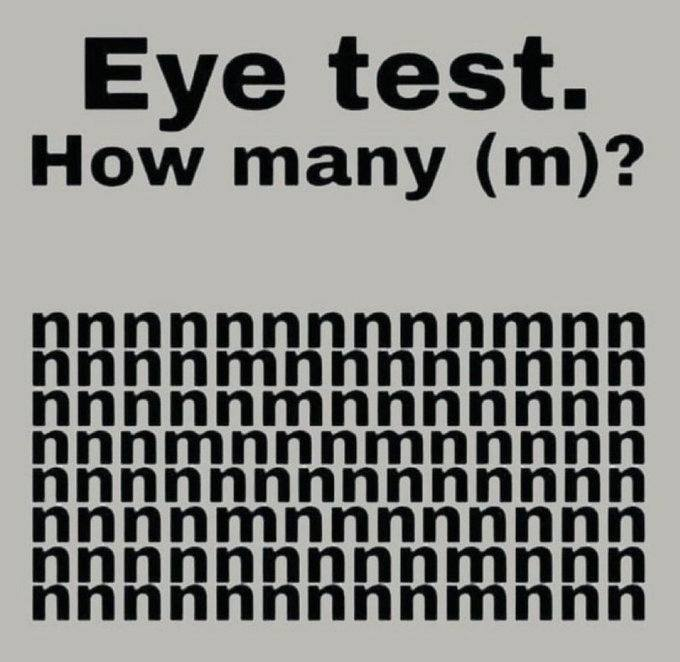Optical illusions have a magical way of captivating our minds, often playing tricks on our visual perception and leaving us questioning what we see. With the abundance of illusion-based puzzles circulating online, one challenge, in particular, has recently gone viral—an image filled with the letter ‘N’, daring viewers to spot the hidden ‘M’. Sounds easy, right? Think again.

In this optical illusion, the image is flooded with rows and rows of neatly arranged ‘N’s. Somewhere within the sea of letters lies a cleverly hidden ‘M’, and your task is to find it. At first glance, it might seem like an effortless challenge. After all, how hard could it be to spot the letter ‘M’ among all the ‘N’s? But don’t be fooled—this illusion is designed to trick your eyes and brain into missing the subtle difference between the two letters.
Let’s test your skills. Take 10 seconds, scan the image, and see how many ‘M’s you can find. Ready? Start the countdown: ten, nine, eight, seven, six, five, four, three, two, one—time’s up! How many did you find?
At first glance, spotting the ‘M’ seems like an easy task. After all, ‘M’ and ‘N’ are distinct letters, right? But here’s the catch: both letters share very similar shapes. Both consist of vertical lines connected by diagonal strokes, with the only difference being the extra diagonal line in the ‘M’. That small detail can be surprisingly difficult to detect when surrounded by a sea of identical-looking ‘N’s.
The creators of this optical illusion understood this well. They used bold typography on a simple white background, camouflaging the letter ‘M’ within the pattern of ‘N’s. This illusion is a perfect example of how our brains can struggle to distinguish subtle visual differences, especially when placed in a distracting context.
This particular illusion highlights just how easy it is to trick our visual system. When our brains process visual information, they look for familiar patterns, often filtering out minute details. In this case, because the letters ‘M’ and ‘N’ are so similar, our brains tend to group them together, making it harder to pick out the one that’s different.
When you scan the image quickly, your brain simplifies the task by grouping similar shapes—this is known as perceptual grouping. Instead of analyzing each letter individually, your brain assumes all the characters are the same. The more similar the shapes, the harder it becomes to break that assumption and spot the outlier.
The viral optical illusion was first shared by the Twitter account “Non-aesthetic Things” and quickly became a sensation. Since its release, the image has accumulated over 27 million views, with thousands of people trying their hand at finding the hidden ‘M’. The comment sections exploded with guesses, debates, and hilarious confusion as users shared how many ‘M’s they could find.
Some confidently stated, “There are 8 Ms, no doubt!” while others insisted, “It has to be 10—there are 2 in the question itself.” The correct answer, for those still wondering, is 10! This includes the ‘M’s found both in the question at the top and in the rows of ‘N’s below.
Did you find all 10? If you did, congratulations! Your visual perception skills are sharper than most. If not, don’t worry—optical illusions are designed to be challenging and to deceive our minds. With a little more focus, you’ll get better at spotting these tricky puzzles.
Whether you found all 10 hidden ‘M’s or only a few, this viral optical illusion is a fun and engaging way to challenge your brain. It offers a perfect example of how our visual system can be tricked by simple patterns, and it’s a great way to test and improve your perception skills.
Optical illusions like this one highlight the playful side of perception and remind us that what we see isn’t always as straightforward as it seems. So, the next time you come across an optical illusion, take a closer look—you might just uncover something surprising. And remember, seeing differently can be just as exciting as seeing clearly!





